A collaborative research effort between IIIT Hyderabad, IIIT Delhi and Carnegie Mellon University reveals the extent of distracted driving while engaging in online social media across several cities in the world. Alarmingly, 4 of the top 10 cities accounting for such distracted driving content are from India. Read on.
Posting of distracted driving content on Snapchat is predominantly higher in Middle-Eastern and cities in the Indian subcontinent, as compared to other cities across the world.
4 of the top 10 cities with distracted driving are from India – Chandigarh, Amritsar, Ahmedabad, and Lucknow, with Chandigarh leading the list
Posting snaps while driving found to be more pronounced than posting of other online content during 6pm-2am.
Males and younger people found to be posting more distracted driving content than females and older people
Keep your eyes on the road, Your hands upon the wheel… These lyrics from The Doors’ Roadhouse Blues could well be a mandatory mantra for all drivers going by statistics related to fatal accidents and distracted driving. According to the National Highway Traffic Safety Administration, (NHTSA, 2016), around 391,000 injuries were reported in the US due to distracted driving. And 14% of all fatal crashes were linked to the use of a smartphone. Closer home, access to the Gachibowli Biodiversity flyover that was opened to the public early last month amid much fanfare has been closed temporarily. The reason: It had shot into ignominy after two tragic accidents seemingly on the heels of each other. In the first, a drunk driver rammed into two motorists who had stopped to take selfies on the flyover. In the more recent one, an overspeeding car careened off the flyover, and toppled down onto a hapless pedestrian claiming her life. The driver was reportedly talking on his mobile phone and did not notice the curve until it was too late.
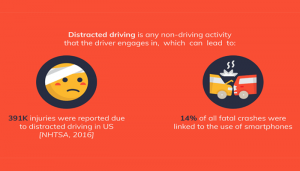
Distracted driving seems to be an alarming epidemic in the world today. It refers to anything that takes your attention away from safe driving. It includes talking on the phone, texting, eating and drinking, fiddling with the stereo system, and in recent times has come to include smartphone-associated usage such as taking videos, posting content online and so on.
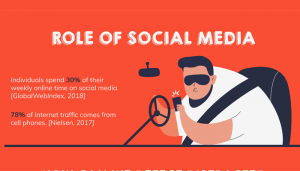
While there have been a number of studies in the past on the fatal effects of using a phone in the form of texting or talking while driving, the effects of social media engagement while driving have not been similarly scrutinised. It was to address this gap that researchers from the International Institute of Information Technology at Hyderabad (IIITH) Shashank Srikanth, Dheeraj Reddy Pailla, Karandeep Juneja along with Hemank Lamba from Carnegie Mellon University, Shwetanshu Singh from IIIT Delhi and Prof. Ponnurangam Kumaruguru (PK), Professor of Computer Science at IIIT Delhi, and Adjunct Faculty at IIITH and faculty investigator for the project, investigated whether some social media posts could be classified as distracted driving content or not. Their publicly available work titled “Driving The Last Mile: Characterizing and Understanding Distracted Driving Posts On Social Networks” has been accepted at the International AAAI Conference on Web and Social Media (ICWSM) 2020.
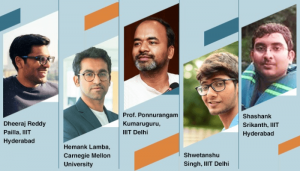
“Our interest is to nudge and persuade the user about the dangers of distracted driving. The other is to also increase drivers’ awareness about this.” says Prof.PK. The motivation for this stemmed from another related research conducted by Prof. PK and his students on selfie deaths or ‘Killfies’ as they are known. Their study revealed that India has the dubious distinction of having the highest selfie-related deaths in the world. “During this research, we also enumerated other scenarios (like BlueWhale challenge, KiKi challenge, etc. across various social media platforms) where people were indulging in risky behaviour. We found a large amount of distracted driving posts on Snapchat during this process,” says Prof. PK referring to one post in particular that triggered research in this area. It was a 4am post on the Delhi-Noida Expressway of a hand holding a glass with presumably alcohol in it, and Punjabi song(s) blaring in the background. (https://rebrand.ly/driving-snap)
Through The Sociological Lens
In a bid to characterize the extent to which distracted driving occurs across the world, and to answer the ‘Why’ of such behaviour, the authors of the research paper drew upon various sociological theories. They began with Goffman’s theory (The Presentation Of Self In Everyday Life, 1959) where he postulated that in social settings, people are constantly engaged in the process of “impression management”, likening it to a dramatic or staged performance. It was Leary, Tchividijian, and Kraxberger (Leary et al, 1994) who extended the study of such affected performance to risk-taking behaviour like indulging in narcotics, dangerous driving, and so on. In 2010, Bernie Hogan applied Goffman’s theory to online social media platforms comparing them to the theatrical stage in his work, “The Presentation of Self In The Age of Social Media: Distinguishing Performances and Exhibitions Online”. It was Lyng’s (1990) Edgework theory – a socio-psychological concept explaining an individual’s voluntary risk-taking behaviour in a bid to temporarily escape from social boundaries – that the current researchers drew a parallel with in their own study. They discovered that social media posts in the form of distracted driving content are a combination and extension of these early sociological theories, falling in the ‘attention-seeking through reckless behaviour’ genre.
What They Did And Found
Over the period of one month early this year, the research team studied and collected data posted on SnapChat, a social-media platform hugely popular with youngsters. They used the SnapMap feature where content is automatically geo-tagged and shown in a localized region. Data in the form of 6.43 million snaps from 173 cities across the world was collected. The team used a machine learning model to first determine whether the post is coming from the driver’s seat or just another passenger in the car. In this way, they tried to label content as ‘distracted driving’ content versus regular content.

They found that around 23.56% of the snaps consisted of distracted driving content. An analysis of city-wise behaviour showed that middle-eastern cities such as Riyadh and Baghdad along with Indian cities of Chandigarh, Amritsar, and Ahmedabad were posting such content in high number (> 35%). And contrary to popular perception, they did not find even a single European or American city in the list of top-20 cities. While investigating such content posts across various times of the day, the researchers found that SnapChat users are in general more active during the night (6pm-2am).
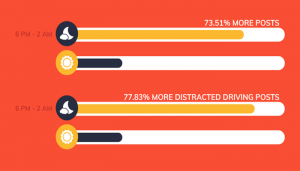
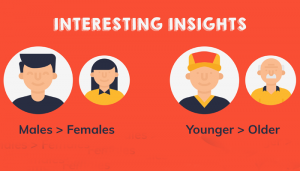
And posting content while driving is also more pronounced during these hours than other forms of content posting. This means that not only are there about 73.51% more Snapchat posts in the night as opposed to the day but also, 77.83% of these posts are distracted driving posts recorded in the same timeframe. To understand how demographics of various cities affect the posting behaviour, the researchers took gender and age distribution into consideration. With previous studies showing that males demonstrate a greater tendency towards risk-taking (Leary et al, 1994; Lyng, 1990), they found that cities with higher male ratio are more likely to produce such distracted content. While admitting that there may be an inherent bias since the platform (SnapChat) itself is one primarily used by young people, the authors nevertheless also observed that cities with a higher proportion of young people are more likely to post distracted driving content than cities with higher proportion of older people. Similarly, the effects of development on such usage was analysed too. For instance, users in developing nations were found to be more likely to post snaps while driving.
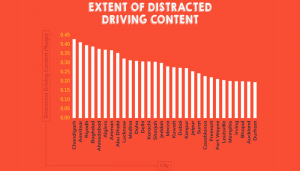
Implications
“I’ve always been interested in how we can use technology to save lives, especially when people make simple errors, whether it’s trying to take a selfie in a dangerous location or engage in online social media while driving,” says Prof. PK. In a classic example of Computer Science methodology being used to tackle societal problems, the spatial, temporal and demographic-related patterns that have been unveiled by the study can be utilised by law-makers and city planners to develop relevant educational awareness along with targeted campaigns and interventions.
For more info on the research, click here.


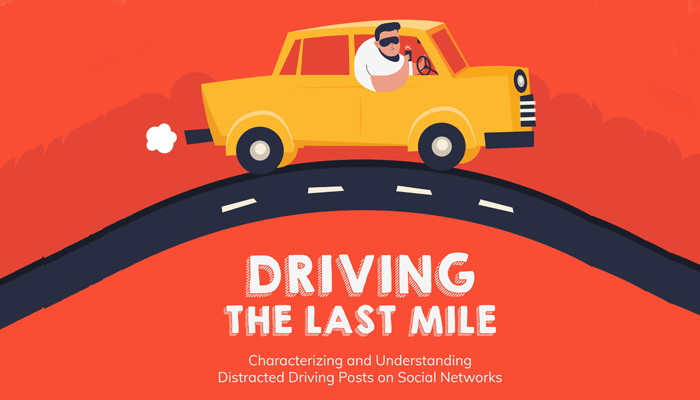
Next post